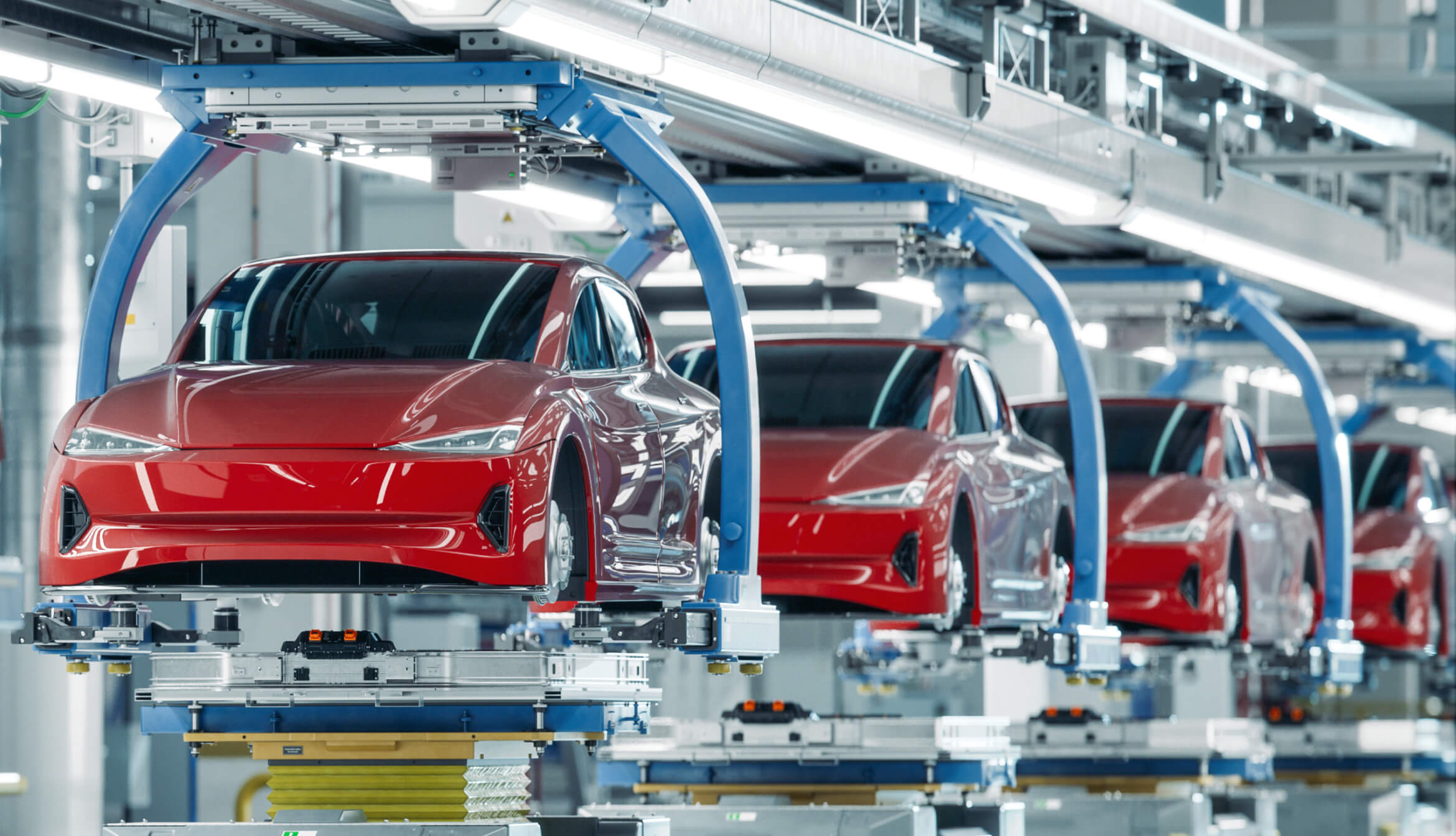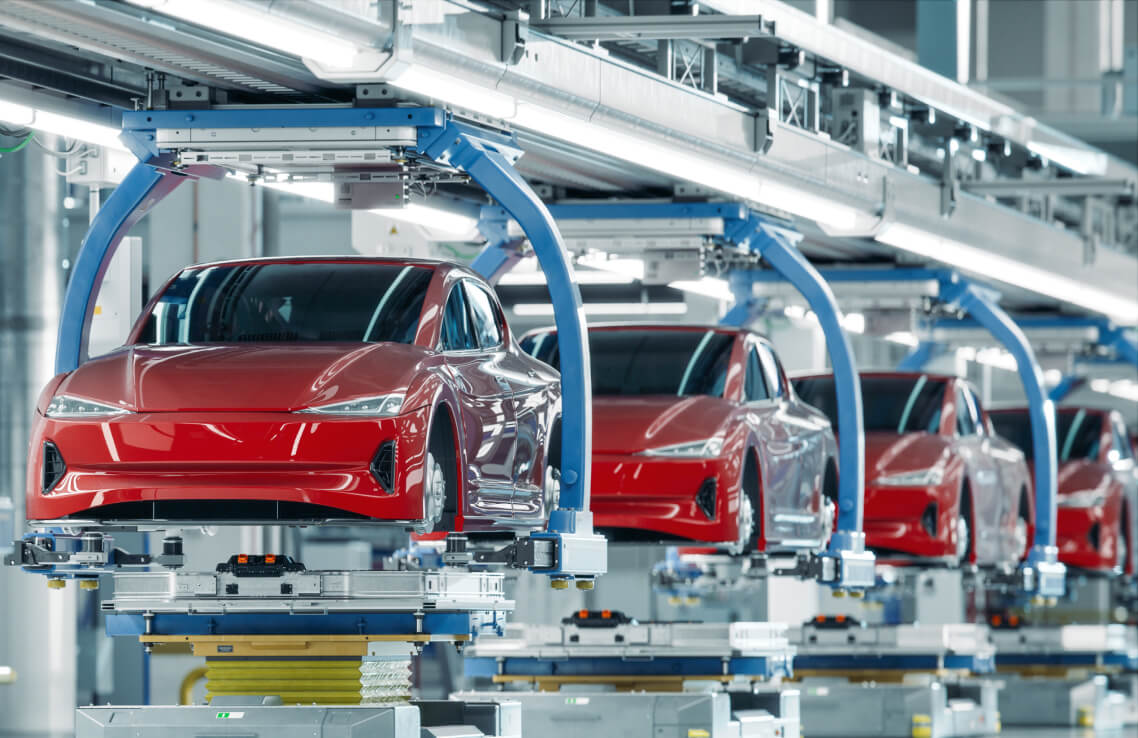Mergers and acquisitions (M&A) in the automotive industry play a crucial role in achieving key business objectives, such as entering new markets or advancing technology. These deals can significantly impact investors, employees, and consumers, affecting stock performance, job security, and the introduction of new car features.
This article looks at the eight biggest mergers and acquisitions in the automotive industry, showing how they have shaped the sector and why they matter.
Historical context of M&A in the automotive sector
Mergers and acquisitions have played a significant role in shaping the automotive sector over the past century. Let’s explore why.
Early 20th century: formation and market consolidation
The auto industry began in the late 19th and early 20th centuries, with many small manufacturers entering the car market. These early years were characterized by intense competition and innovation, as companies raced to establish themselves in a rapidly growing industry:
- Early consolidation
One of the most notable examples of early automotive mergers and acquisitions activity was the formation of General Motors (GM) in 1908. GM was created by acquiring several smaller car manufacturers, including Buick, Oldsmobile, and Cadillac. This allowed GM to achieve economies of scale, streamline operations, and dominate the US automotive industry.
- The rise of Ford
Ford Motor Company, though not initially formed through M&A, became a giant in the industry with its innovative mass-production techniques. Over time, Ford engaged in strategic acquisitions to expand its product range and enhance services to customers globally.
Mid-20th century: global expansion and diversification
As the industry matured, automotive companies began to look beyond their home markets for growth opportunities. This period saw a wave of cross-border M&A activity, as businesses and private equity firms sought to enter new markets and diversify their offerings:
- European and Japanese expansion
After World War II, European and Japanese automakers, such as Volkswagen and Toyota, began expanding globally. To gain access to new markets, they engaged in acquisitions and joint ventures, particularly in North America.
- American giants expand abroad
US automakers also pursued M&A to expand internationally. Ford, GM, and Chrysler acquired or formed partnerships with foreign companies to enter Europe and Asia, helping them to become global players.
Late 20th century: strategic alliances
By the late 20th century, the automotive industry was highly competitive and globalized. Companies turned to strategic mergers and alliances to survive and thrive:
- Formation of automotive giants
The 1998 merger of Daimler-Benz (Germany) and Chrysler (USA) is a significant example, aimed at creating a global powerhouse. However, the merger ultimately struggled due to cultural differences and strategic mismatches, leading to its eventual dissolution in 2007.
- Renault-Nissan alliance
In 1999, Renault and Nissan formed a strategic alliance, which became one of the most successful automotive partnerships in history. This alliance allowed both companies to share technology, reduce costs, and expand their global presence without fully merging.
21st century: the automotive industry’s shift
The 21st century has brought about significant changes in the automotive sector, driven by technological advancements, changing consumer preferences, and increasing regulatory pressures, including the US Inflation Reduction Act and the EU’s ban on the sale of gas-powered vehicles after 2035:
- Electric vehicle production
The growing importance of electric vehicles and autonomous driving has led to a new wave of deal activity. Traditional automakers have acquired or invested in technology startups to keep pace with these trends. For example, GM acquired Cruise, an autonomous vehicle startup, to accelerate its self-driving technology efforts.
- Industry consolidation and alliances
As the industry faces new challenges, including the transition to sustainable mobility and digitalization, auto dealers are forming alliances and engaging in automotive M&A to share the costs and risks. The 2021 merger of PSA Group and Fiat Chrysler Automobiles to form Stellantis is a notable example of recent mergers and acquisitions in the automotive industry aimed at creating synergies.
Recent M&A activity
In 2022, the industry emphasized speed, with many original equipment manufacturers (OEMs) forming joint ventures and alliances to advance in what’s termed the “5 RACES”:
- Real customer focus
- Autonomous driving
- Connectivity and digitization of vehicles
- Electrification of powertrains
- Shared mobility
OEMs pursued deals to rapidly develop batteries, EV technology, and advanced driver-assistance systems while adjusting their legacy internal combustion engine operations for future investments. Despite the effectiveness of these deals, OEMs now face new challenges, including securing critical materials for batteries.
In 2023, deal activity within the automotive value chain slowed significantly due to an uncertain macroeconomic and geopolitical environment, with deal value dropping by 59% and volume by 40%. Companies have recognized that M&A is now a vital strategic tool, and those who don’t participate may struggle to remain competitive.
Read our articles on the biggest tech acquisitions and examples of mergers and acquisitions during the last seven years to understand how strategic acquisitions shape industries and drive innovation.
The eight biggest mergers and acquisitions in the automotive industry
Now let’s explore the eight most significant automotive industry mergers and acquisitions.
1. Ford and Jaguar Cars
- Year: 1989
- Deal value: $2.5 billion
The deal between Ford and Jaguar Cars is first on the list of major strategic mergers. Ford acquired Jaguar Cars in 1989, marking a significant expansion of its luxury vehicle portfolio. Later, in 2000, Ford further strengthened its position in the luxury automotive market by acquiring Land Rover from BMW. This move brought the two prestigious British brands, Jaguar and Land Rover, under the same corporate umbrella for the first time since their shared history in British Leyland.
In 2006, Ford purchased the Rover brand name from BMW for around £6 million, reuniting the Rover and Land Rover brands for the first time since the Rover Group’s breakup. These acquisitions were part of Ford’s broader strategy to strengthen its luxury brand offerings.
However, the deal outcomes led Ford to reevaluate its strategy, and in 2008, it sold both Jaguar and Land Rover to Tata Motors for $2.23 billion. This transaction included several other British marques, like Daimler and Lanchester. Tata Motors then established Jaguar Land Rover Limited, which became responsible for both brands. In 2013, the company underwent further restructuring, fully integrating Jaguar and Land Rover operations under one entity.
2. BMW and Rover Group
- Year: 1994
- Deal value: $1.35 billion
The Rover Group, previously known as BL plc (British Leyland), was a major British vehicle manufacturer that included brands like Rover, Mini, MG, and Land Rover. Originally state-owned since 1975, the company underwent several corporate mergers and restructurings, including a rebranding as Rover Group in 1986. By 1988, British Aerospace (BAe) acquired the company for £150 million, focusing on the Rover brand while phasing out others like Austin.
In 1994, BAe sold an 80% stake in the Rover Group to the German automaker BMW for £800 million. This acquisition marked a major shift for Rover, as BMW sought to revitalize the struggling British carmaker. Despite BMW’s substantial investments, Rover continued to face financial difficulties, and the acquisition ultimately proved unprofitable for BMW.
By 2000, BMW decided to break up the Rover Group. Ford acquired the Land Rover division, while the MG and Rover brands were sold to the Phoenix Consortium, forming the smaller MG Rover Group. BMW retained the rights to some historic marques like Mini, which became a successful brand under its stewardship. However, the Rover marque itself was eventually sold to Ford, and later transferred to Tata Motors along with Land Rover in 2008, reuniting the original Rover brands under one ownership.
3. Daimler-Benz and Chrysler
- Year: 1998
- Deal value: $38 billion
In 1998, Daimler-Benz and Chrysler Corporation merged to create DaimlerChrysler AG, a key automotive deal that was called a “merger of equals.” This $38 billion deal was the largest cross-border merger ever at that time. The merger allowed Daimler-Benz’s non-automotive divisions to continue operating independently and pursue their growth strategies.
However, the merger was controversial. Investors sued, arguing whether it was truly a merger of equals or if Daimler-Benz had taken over Chrysler. Some of these lawsuits were settled, while others were dismissed. The merger also led to the resignation of DaimlerChrysler’s chairman, Jürgen E. Schrempp, due to the company’s declining stock price.
By 2006, Chrysler was struggling financially, reporting a $1.5 billion loss and planning layoffs and plant closures. In 2007, DaimlerChrysler decided to sell Chrysler to Cerberus Capital Management for $6 billion, completing the sale in August 2007. DaimlerChrysler then rebranded as Daimler AG and retained a 19.9% stake in Chrysler.
4. Fiat and Chrysler
- Year: 2009
- Deal value: $52 billion
One of the notable automotive acquisitions took place in 2009 when Fiat acquired a 35% stake in Chrysler, which was struggling during the Great Recession. This investment came after Chrysler had faced severe financial difficulties, including a sharp decline in sales and a significant number of job cuts. The U.S. government provided a $13.4 billion bailout to both Chrysler and General Motors to help them stay afloat.
Despite Fiat’s investment, Chrysler filed for bankruptcy later in 2009. During this bankruptcy, Fiat’s stake increased but did not grant it full control. The United States, through the United Auto Workers’ retiree trust, held a 55% share in Chrysler. Over the next two years, Fiat gradually increased its ownership, eventually buying out the U.S. government’s stake in 2011. By January 2014, Fiat had acquired the remaining shares held by the UAW, and Chrysler was fully integrated into Fiat.
The merged entity was renamed Fiat Chrysler Automobiles (FCA) and registered in Amsterdam. In 2019, FCA sought a new merger partner, initially negotiating with Renault but eventually pursuing a deal with Peugeot. By December 2020, the European Commission approved the merger, and in January 2021, FCA and Peugeot finalized their merger, forming Stellantis.
5. Geely and Volvo Cars
- Year: 2010
- Deal value: $1.8 billion
In 2010, Zhejiang Geely Holding Group Co., a Chinese automotive conglomerate, acquired Volvo Cars from Ford Motor Co. for $1.8 billion. This was one of the most notable acquisitions as it marked Volvo’s departure from American ownership and its entry into Chinese hands.
Ford had owned Volvo since 1999 but decided to sell the Swedish automaker due to financial pressures following the 2008-2009 global financial crisis. Geely’s purchase was a strategic move aimed at expanding its global footprint and gaining access to Volvo’s technology and brand.
Under Geely’s ownership, Volvo received substantial investment, with over $11 billion committed to modernizing its vehicle lineup, advancing electric vehicle technology, and expanding its manufacturing capabilities. This investment helped Volvo modernize its operations, improve its competitive position, and capture a larger share of the growing Chinese auto market.
6. Nissan and Mitsubishi Motors
- Year: 2016
- Deal value: $2.3 billion
Nissan and Mitsubishi Motors are also on the list of the automotive mergers. On October 20, 2016, Nissan Motor Co. acquired a 34% stake in Mitsubishi Motors, becoming its largest shareholder. This move was part of a strategy to enhance the global alliance between Nissan, Mitsubishi Motors, and Renault, creating one of the world’s top three automotive groups with annual sales reaching 10 million vehicles.
Nissan Chairman and CEO, Carlos Ghosn, announced that this acquisition would lead to closer collaboration between the companies, including joint purchasing, shared vehicle platforms, and technology exchange. The partnership aimed to expand their market presence in both developed and developing markets.
Ghosn projected that the synergy from this alliance would bring significant financial benefits, estimating cost savings of 24 billion yen in the 2017 fiscal year, increasing to 60 billion yen in 2018. This was expected to boost Nissan’s earnings per share by four yen in 2017 and 10 yen in 2018.
7. Porsche and Volkswagen
- Year: 2012
- Deal value: unknown
Porsche and Volkswagen are among automotive M&A examples. Though founded by the same visionary, Ferdinand Porsche, the companies had a complex and contentious relationship. Ferdinand Porsche, a renowned engineer, established both Porsche and Volkswagen in the mid-20th century. His son-in-law, Anton Piëch, was Volkswagen’s first production manager.
In 2005, Porsche began to buy up shares in Volkswagen, partly due to concerns over the Volkswagen Law, which had previously protected Volkswagen from hostile takeovers. Porsche saw this as an opportunity to increase its influence or potentially take over Volkswagen. This led to a dramatic series of events where Porsche made aggressive moves to acquire Volkswagen.
The situation took several unexpected turns. Volkswagen, instead of being taken over, eventually executed a reverse takeover of Porsche. In this reversal, Volkswagen effectively absorbed Porsche. This complex process included legal disputes and corporate governance issues, highlighting the differences between German and U.S. securities and corporate laws. In the end, Volkswagen spun off Porsche through an initial public offering (IPO).
8. Fiat Chrysler Automobiles (FCA) and the French PSA Group
- Year: 2021
- Deal value: $52 billion
Stellantis N.V. is a multinational automotive corporation formed in 2021 through one of the biggest automotive industry deals — a merger of Fiat Chrysler Automobiles (FCA) and the French PSA Group. Headquartered in Hoofddorp, Netherlands, Stellantis quickly became the world’s fourth-largest automotive business by sales. In 2023, it was ranked 61st in the Forbes Global 2000, with a workforce of approximately 300,000 employees and operations in over 130 countries.
Stellantis oversees 14 well-known brands, including Jeep, Peugeot, and Chrysler, and continues to expand its portfolio through strategic acquisitions, such as the car-sharing platform Share Now and autonomous vehicle firm aiMotive. The company is heavily invested in electric vehicle technology, planning to launch 29 electrified models by 2021’s end and develop four EV platforms by 2030, backed by over €30 billion in investments.
In 2023, Stellantis acquired a 20% stake in Chinese electric vehicle maker Leapmotor, aiming for 500,000 sales outside China by 2030. The company’s stock trades on the Borsa Italiana, Euronext Paris, and the New York Stock Exchange.
For more information on major business deals and their effects, check out the article biggest acquisitions of all time.
Key takeaways
- M&A in the automotive industry often aims to achieve strategic goals like entering new markets and enhancing technological capabilities. For instance, the 2021 merger of Fiat Chrysler Automobiles and PSA Group created Stellantis, a global automotive giant focused on innovation and market expansion.
- Major automotive M&A deals, such as Daimler-Benz’s merger with Chrysler and Geely’s acquisition of Volvo, had a significant industry impact. These transactions not only influence company operations but also affect stock performance, consumer choices, and global market strategies.
- While M&A can provide opportunities for growth and innovation, it also comes with challenges. For example, Ford’s acquisition of Jaguar and Land Rover initially aimed at boosting its luxury portfolio but ultimately led to a reevaluation of strategy, resulting in the sale of these brands to Tata Motors.




